Don't wanna be here? Send us removal request.
Link
0 notes
Link
0 notes
Link
0 notes
Link
0 notes
Link
0 notes
Link
0 notes
Link
0 notes
Link
0 notes
Link
0 notes
Link
0 notes
Link
0 notes
Link
0 notes
Text
WHAT ARE THE DIFFERENT TYPES OF CRYPTOCURRENCIES? — CRYPTOCURRENCY FOR BEGINNERS
WHAT ARE THE MAIN CRYPTOCURRENCY?
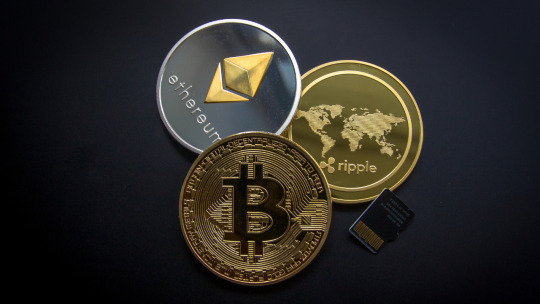
Bitcoin is, without a doubt, the most common cryptocurrency (BTC). The blockchain Ethereum is its closest rival in terms of market capitalization (ETH). Other common currencies such as Ripple (XRP), Bitcoin Cash (BCH), and Litecoin (LTC) lead these representatives (LTC).
1. BITCOIN (BTC)
Bitcoin is a digital currency that was first introduced in January of 2009. It is based on ideas presented in a whitepaper by Satoshi Nakamoto, a mysterious and pseudonymous figure. The identity of the person or people behind the technology is still unknown. Bitcoin promises lower transaction costs than conventional online payment methods, and it is run by a decentralised authority, unlike government-issued currencies. Bitcoin is considered the gold standard in the cryptocurrency market, on the basis of which new cryptocurrencies are also created.
Cryptocurrencies, such as Bitcoin, are a form of digital currency. There are no actual bitcoins; instead, balances are maintained on a public ledger that anyone can see. A huge amount of computational power is used to validate all bitcoin transactions. Individual bitcoins are not valuable as commodities since they are not distributed or guaranteed by any banks or governments. Despite the fact that it is not legal tender, Bitcoin is extremely common and has sparked the development of hundreds of other cryptocurrencies known as altcoins. “BTC” is a common abbreviation for Bitcoin.
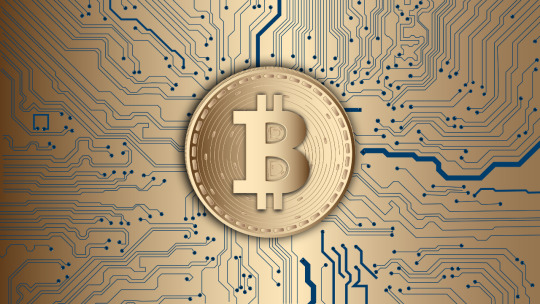
2. ETHEREUM (ETH)
Ethereum is an open-source, blockchain-based, decentralised software platform with its own cryptocurrency, ether, that was launched in 2015. It allows SmartContracts and Distributed Applications (Apps) to be designed and run without the possibility of downtime, fraud, control, or third-party intervention.
Ethereum is both a framework and a Turing-complete programming language that runs on a blockchain, allowing developers to construct and publish distributed applications.
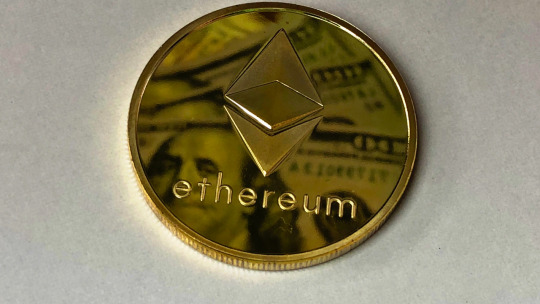
3. RIPPLE (XRP)
XRP is the third-largest cryptocurrency by market capitalization, behind Bitcoin and Ether (at the time of writing).
XRP, like the top two cryptocurrencies, is connected to the Ripple technology network, which was created to make cross-border payments and money transfers more affordable — and as a result, it has piqued the attention of major banks around the world.
Many who support bitcoin believe it has the ability to drastically minimise friction in the global financial system. Detractors argue that XRP isn’t really a “cryptocurrency” in the traditional sense because the Ripple Consensus Ledger doesn’t always use XRP as an incentive for network node operators like Bitcoin or Ether does, and because the platform can supposedly freeze funds at will.
Regardless, XRP remains popular among cryptocurrency investors, and the Ripple platform has attracted the attention of major financial institutions.
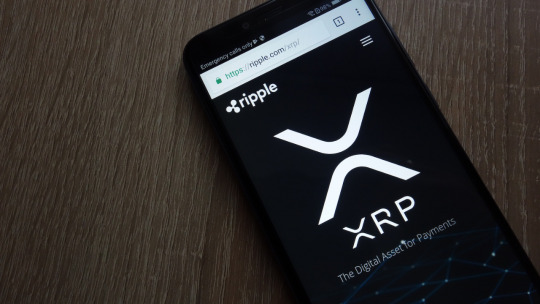
4. BITCOIN CASH (BCH)
Bitcoin Cash is a cryptocurrency that was forked from Bitcoin in August 2017. 1 Bitcoin Cash increased block size, allowing for more transaction processing and improved scalability.
In November 2018, the blockchain split again, this time into Bitcoin Cash ABC and Bitcoin Cash SV (Satoshi Vision). Since it uses the original Bitcoin Cash client, Bitcoin Cash is classified as Bitcoin Cash.
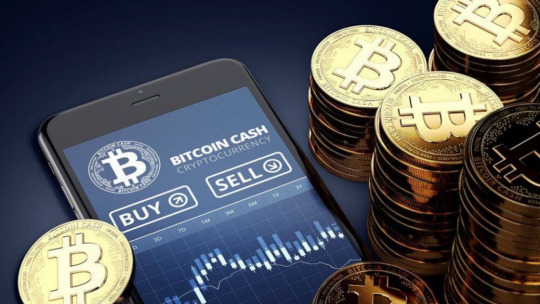
5. LITECOIN (LTC)
Litecoin (LTC) is a cryptocurrency developed by Charles “Charlie” Lee in October 2011. Litecoin is a Bitcoin clone (BTC). Litecoin, like Bitcoin, is focused on an open-source global payment network that is independent of any central authority. Litecoin differs from Bitcoin in many ways, including its quicker block generation rate and its use of the Scrypt proof-of-work scheme.

Cryptocurrencies may be used for a variety of purposes, including settlement, savings, and investment.
Cryptocurrencies are generally divided into two main categories:
Crypto coins
Tokens
CRYPTO COINS
Crypto coins are payment methods based on blockchain technology that operate in different and distinct networks. Bitcoin is the most commonly used cryptocurrency. Other cryptomonads based on the protocol of the Bitcoin network, such as Litecoin, Namecoin, or Bitcoin Cash, will be available soon because the Bitcoin network is open source and anyone can see how it is configured. On the other hand, there are cryptomonads that do not derive from the Bitcoin network’s open-source code. The developers of these cryptocurrencies, such as Ethereum, Ripple, and Monero, software the blockchain networks on which their cryptocurrencies operate.
TOKENS
Tokens are a type of cryptocurrency that aids in the operation and maintenance of an existing technology platform or application. Tokens reflect the ownership of rights to a certain piece of property or service. Tokens are developed and distributed during a token’s initial public offering, also known as an ICO (ICO). The initial coin offering (ICO) process helps you to raise funds for a particular project while also granting token buyers some privileges.
DIFFERENCE BETWEEN CRYPTO COINS & TOKENS
You should now be able to tell the difference between a digital “coin” and a digital “token.” After all, it wasn’t all that troubling, was it?
You can now understand the basic differences between a coin and a token: coins are native to their own blockchain, while tokens are not. Tokens, on the other hand, are created on top of a different blockchain, such as Ethereum, NEO, or Waves.
You should also be aware of the most popular applications for coins and tokens. Coins are most commonly used as currency, but some coins have additional functions. This include being used to power apps, serving as a stake to verify a network transaction, and powering smart contract and token transactions.
Tokens, on the other hand, serve a different function. If they were designed to be used in a dApp, their function would be determined by the app. They can be about stuff like voting rights in some situations. In other instances, they are used for dApp purchases (such as Civic) or to reward users with discounts on payments, among other items (like Binance).
To help you understand what we mean by each word, you’ve been given numerous examples of coins and tokens.
So, now that you know what a coin and a token are, consider your favourite cryptos… Is this a set of coins or a set of tokens? If you’re not sure, just ask me and I’ll tell you!
Free Cryptocurrency Master Class Here
0 notes
Text
The Beginners Guide To Forex Trading 2021
For newcomers to forex trading, it can be challenging. This is due to competitors to the market having unreasonable but normal standards. Many of the basic concepts converge whether we’re talking about forex trading for beginners or share trading for beginners. However, I’ll explain both in this post. The first question on everyone’s mind is: “How do I learn Forex from the ground up?” Don’t worry, this beginner’s guide to trading is our comprehensive guide to all facets of Forex and general trading.
I believe You Will Read This Complete Article And Click Here To Know More About Our Product Forex Triple Hit — 3 In 1 Trading System
What Is the Forex Market?
Currency trading takes place on the foreign exchange market. Most citizens around the world, whether they know it or not, are concerned with currencies since they must be traded in order to perform international trade and business. If you live in the United States and wish to buy cheese from France, you or the business from which you buy the cheese must pay the French in euros (EUR). This means that the importer in the United States will have to convert the equivalent amount of dollars (USD) into euros. The same is true when it comes to flying.Since euros are not allowed in Egypt, a French tourist visiting the pyramids would be unable to pay in euros. As a result, the tourist must exchange his euros for the local currency, the Egyptian pound, at the current exchange rate.
There is no central marketplace for foreign exchange in this international market, which is a unique feature. Rather than dealing on a central authority exchange, currency trading is done electronically over-the-counter (OTC), which means that all trades take place over computer networks between traders all over the world.The market is open 24 hours a day, five days a week, and currencies are exchanged in almost every time zone in London, New York, Tokyo, Zurich, Frankfurt, Hong Kong, Singapore, Paris, and Sydney, among other major financial centres. This means that when the trading day in the United States finishes, the forex market in Tokyo and Hong Kong starts anew. As a result, the forex market can be very active at any time of day, with price quotes constantly changing.
Spot Market and the Forwards & Futures Markets
There are actually three ways that institutions, corporations and individuals trade forex: the spot market, the forwards market, and the futures market. Forex trading in the spot market has always been the largest market because it is the “underlying” real asset that the forwards and futures markets are based on. In the past, the futures market was the most popular venue for traders because it was available to individual investors for a longer period of time. However, with the advent of electronic trading and numerous forex brokers, the spot market has witnessed a huge surge in activity and now surpasses the futures market as the preferred trading market for individual investors and speculators. When people refer to the forex market, they usually are referring to the spot market. The forwards and futures markets tend to be more popular with companies that need to hedge their foreign exchange risks out to a specific date in the future.
More specifically, the spot market is where currencies are bought and sold according to the current price. That price, determined by supply and demand, is a reflection of many things, including current interest rates, economic performance, sentiment towards ongoing political situations (both locally and internationally), as well as the perception of the future performance of one currency against another. When a deal is finalized, this is known as a “spot deal.” It is a bilateral transaction by which one party delivers an agreed-upon currency amount to the counter party and receives a specified amount of another currency at the agreed-upon exchange rate value. After a position is closed, the settlement is in cash. Although the spot market is commonly known as one that deals with transactions in the present (rather than the future), these trades actually take two days for settlement.
Unlike the spot market, the forwards and futures markets do not trade actual currencies. Instead they deal in contracts that represent claims to a certain currency type, a specific price per unit and a future date for settlement.
In the forwards market, contracts are bought and sold OTC between two parties, who determine the terms of the agreement between themselves.
In the futures market, futures contracts are bought and sold based upon a standard size and settlement date on public commodities markets, such as the Chicago Mercantile Exchange. In the U.S., the National Futures Association regulates the futures market. Futures contracts have specific details, including the number of units being traded, delivery and settlement dates, and minimum price increments that cannot be customized. The exchange acts as a counterpart to the trader, providing clearance and settlement.
Both types of contracts are binding and are typically settled for cash at the exchange in question upon expiry, although contracts can also be bought and sold before they expire. The forwards and futures markets can offer protection against risk when trading currencies. Usually, big international corporations use these markets in order to hedge against future exchange rate fluctuations, but speculators take part in these markets as well.
Note that you’ll often see the terms: FX, forex, foreign-exchange market, and currency market. These terms are synonymous and all refer to the forex market.
Forex Hedging
Protect yourself against a big loss
Hedging is the process of devising a strategy to defend yourself against a significant loss. When you buy auto insurance, you’re hedging your bets against the risk of a costly crash.
Consider a hedge in forex as protection for your trade. Hedging is a technique for reducing or removing the amount of damage you’d experience if anything unforeseen happens.
Simple Forex Hedging
Some brokers will allow you to position direct hedge trades. A direct hedge occurs when you are permitted to buy a single currency pair, such as USD/GBP. You may also position a trade to sell the same pair at the same time.
While the net profit of your two trades is zero while both are open, if you time the market correctly, you will make more money without taking on additional risk.
The Protection of a Hedge
A simple forex hedge safeguards you by allowing you to trade in the opposite direction of your initial trade without having to close it. One might argue that closing the initial trade at a loss and then putting a new trade in a better position makes more sense. This is an example of the kinds of choices you’ll have to make as a trader.
You might definitely exit your initial trade and re-enter the market later at a better price. The benefit of using the hedge is that you can hold your first trade on the market while profiting from a second trade that profits as the market moves against your first.
Undoing a Hedge
You can always put a stop-loss on the hedging trade or simply close it if you think the market would reverse and go back in your initial trade’s favour.
Hedging forex trades can be done in a variety of ways, some of which can be very complicated. Since many brokers do not allow traders to take directly hedged positions in the same account, alternative strategies are required.
Multiple Currency Pairs
A forex trader may use two separate currency pairs to hedge against a specific currency. For eg, you might buy a long EUR/USD position and a short USD/CHF position. It wouldn’t be exact in this situation, but you’d be hedging your USD exposure. The only drawback to this method of hedging is that you are vulnerable to fluctuations in the Euro (EUR) and Swiss Franc (CHF) (CHF).
Because of this strategy, if the Euro rises against other currencies, there will be a fluctuation in EUR/USD that is not offset by your USD/CHF trade. Furthermore, unless you are constructing a complex hedge involving several currency pairs, this approach is usually not a secure way to hedge.
Forex Options
A forex option is a contract to execute a future exchange at a predetermined price. Let’s say you buy a long EUR/USD trade at 1.30. You’d put a forex strike option on that spot at 1.29 to cover it.
This strategy ensures that if the EUR/USD falls to 1.29 within the time frame defined for your option, you will be paid out. The amount you are paying is determined by the market conditions at the time you purchase the option and the size of the option. If the EUR/USD does not meet the price by the deadline, you will just forfeit the option’s purchase price. The higher the reward if the price is met within the agreed period, the further your choice is from the market price at the time of purchase.
Reasons to Hedge
The primary reason for using hedging on your trades is to reduce risk. If done correctly, hedging will become a greater part of your trading strategy. Only seasoned traders who understand market swings and timing should use it. Playing with hedging without sufficient trading experience could quickly deplete your account balance.
Tax, savings, or financial services and advice are not covered by The Balance. The information is being provided without taking into account any individual investor’s investment goals, risk tolerance, or financial circumstances, and may not be appropriate for all investors. Past success does not guarantee potential outcomes. Investing entails risk, including the possibility of losing money.
Speculation Psychology in the Forex Industry
In forex trading, speculation is the name of the game. Even though there is no guarantee of success, every trader must at some point click “buy” or “sell” and commit to a position based on their research. Sadly for traders, the market may have a very different perspective on the market, which can lead to intense introspection.
This article seeks to deal with some of those hard-hitting questions and explores the following:
What is foreign exchange market speculation? What happens if something goes horribly wrong? Top four hints for speculating like a pro
WHAT IS SPECULATION IN THE FOREX MARKET?
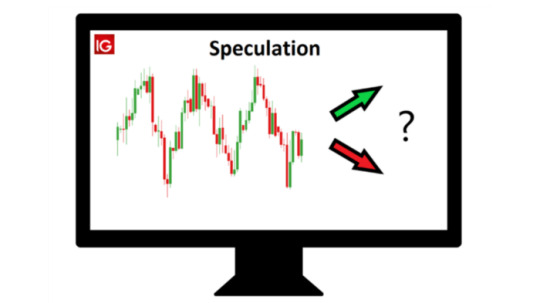
After you’ve built a forex trading strategy and mastered the dynamics of the business, you’ll have a lot of the tools you’ll need to succeed. And if you don’t achieve success, you will find yourself asking a lot of questions.
“Am I trading the right strategy?”, “Do I really know what I’m doing?”
These concerns/doubts are not rare. Most traders have had these feelings at some point and have learnt to deal with them. Let’s take a look at these concerns head on:
1) Am I Trading the Right Strategy?
Many traders are unaware that market dynamics change over time. As a currency speculator, you might spend weeks analysing a certain market that fits your policy at the moment, but it is sure to change, and when it does, it would appear that nothing is going in your favour.
By compared EUR/USD in 2017 to the same currency pair in the first half of 2019, this is a prime example.
For the bulk of 2017, EUR/USD was in a clear uptrend. Backtesting pattern trading techniques would logically produce appealing outcomes, and any fair trader would want to put such a strategy into action.
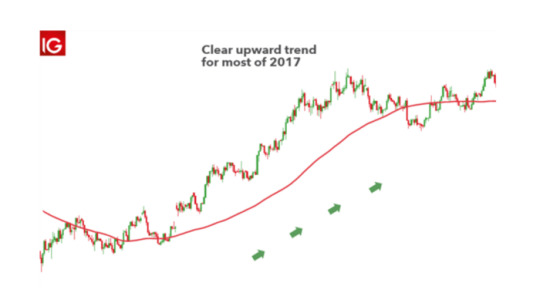
A very different image emerges below, with the EUR/USD trading sideways for the first half of 2019, making things tough for new trend traders. This is shown by the red 200 day moving average, which slices through price several times but fails to provide a consistent signal.
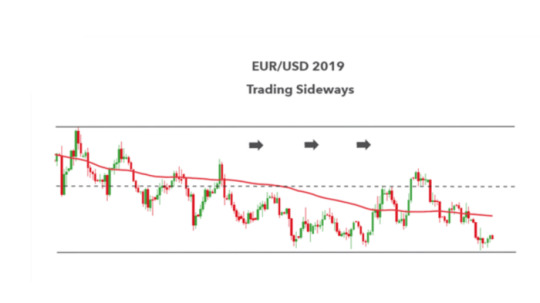
Traders should set aside some time to determine if market conditions have changed. It’s entirely conceivable that the trading strategy is sound, but the market has lost the characteristics that initially drew you in.
2) Do I Really Know What I’m Doing?
“FAIL: First Attempt in Learning” — Anonymous
This is a difficult question to answer since it depends on the experience and preparedness of each trader. Since there is no way to answer this question, the next best thing is to look at what others have done wrong, learn from it, and avoid committing the same trading mistakes.
In our Traits of Successful Traders survey, DailyFX looked at over 30 million live IG trades to find the most common mistake traders make. The first step to trading like a pro is to understand when something goes wrong and make the required changes.
4 TIPS TO GET BACK ON TRACK AND SPECULATE LIKE A PROFESSIONAL TRADER
1) Don’t Let Risk Change Your Behaviour
The understanding of losses is the most significant psychological barrier for traders (and the concept of losing). The pain of closing a trade and realising a loss greatly outweighs the thrill of realising a winning trade by a factor of ten.
First and foremost, top traders use sound risk management. Without the use of stops, traders will win two-thirds of their trades and yet blow up their account. As a result, traders are more likely to let losing positions run while taking profit as soon as a position turns positive. It should never happen that the losers outnumber the winners.
Implementing a trailing stop or manually shifting your current stop when the market swings in your favour is one way to control your emotions. Traders should rest easy knowing that they’ve reached breakeven, and any more change in your favour is pure benefit.
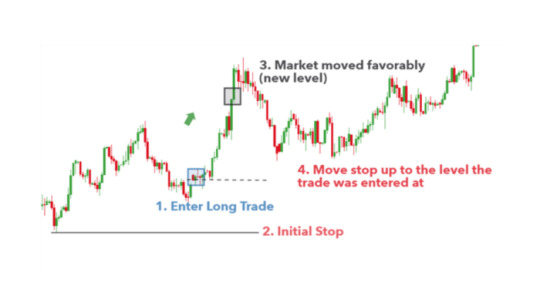
Before placing a trade, know what level of risk you are prepared to take on and ensure that the risk to reward ratio is at least 1:1.
2) Bring a Positive Mindset to the Charts Every Day
Since you will eventually lose money in this game of forex speculation, it is vital that you do not allow those losses to influence your mindset.
Traders are often disappointed when they are stopped out, which can be quite discouraging. As a consequence, they cut corners in their research or doubt their own methodology. This is never going to end well.
The key to keeping a positive mindset in trading is to look at losses in the same way that a business owner looks at expenses; simply as a cost of doing business. Because once you’ve learned to lose properly, and after you’ve learned to keep those losses in scope of the bigger picture — you’ve addressed biggest aspects of trading psychology.
3) Strike the delicate balance between fear and greed
These two motivations can have a significant impact on how we live our lives, not only in trading. Both fear and greed can be extremely harmful when trading, as they can distort your judgement and lead to poor decisions.
When they are in a losing situation, most people become greedy, able to hang on if the price can only return to their entry level. And most people would become afraid if they are in a winning situation.
Traders can try to reverse those impulses and become greedy after they’ve been proved right. If you’re worried about your initial danger, you can use the breakeven stop to help calm your nerves.
4) Don’t let confidence get the best of you
It’s normal for people to gain trust in their dealings after a series of wins, and this can be a positive thing.
However, once a trader enters the territory of being “overconfident,” risky behaviours can creep into their approach, the most dangerous of which is the willingness to break their own trading rules simply because they believe it will work.
As a result, traders should strive to strike a balance between being scared or afraid and being overconfident.
Currency as an Asset Class
There are two distinct features to currencies as an asset class:
You can earn the interest rate differential between two currencies.
You can profit from changes in the exchange rate.
By purchasing the currency with the higher interest rate and shorting the currency with the lower interest rate, an investor will benefit from the difference between two interest rates in two different economies. Since the interest rate difference was so big prior to the 2008 financial crisis, it was very common to short the Japanese yen (JPY) and buy British pounds (GBP). A “carry exchange” is a term used to describe this strategy.
Why We Can Trade Currencies
Prior to the internet, currency trading was extremely difficult for individual investors. Since forex trading involves a large amount of money, the majority of currency traders were large multinational companies, hedge funds, or high-net-worth individuals. With the aid of the internet, a retail market aimed at individual traders has evolved, offering convenient access to the foreign exchange markets, either through banks or through brokers acting as secondary market participants. Individual traders may monitor a big trade with a small account balance thanks to the high leverage offered by most online brokers or dealers.
Top 5 Forex Risks to Consider for Traders
Leverage Risks
Leverage in forex trading involves a small initial investment, known as a margin, in order to gain access to large trades in foreign currencies. Margin calls, in which the investor is expected to pay an additional margin, can occur due to minor price fluctuations. Aggressive use of leverage during volatile market conditions can result in significant losses in excess of initial investments. (See Forex Leverage: A Double-Edged Sword for more information.)
Interest Rate Risks
Interest rates have an effect on country exchange rates, according to simple macroeconomics courses. If a country’s interest rates increase, its currency will grow as a result of an influx of investments in its assets, ostensibly because a stronger currency offers higher returns. If interest rates decline, the currency would weaken as investors take their capital out of the economy. The difference in currency values will cause forex prices to change drastically due to the existence of the interest rate and its circuitous impact on exchange rates. (For more information, see Why Interest Rates Are Important For Forex Traders.)
Transaction Risks
Transaction risks are exchange rate risks associated with time variations at the start and end of a contract. Since forex trading takes place 24 hours a day, exchange rates can fluctuate before trades are completed. As a result, different rates for currencies can be exchanged at different times during trading hours. The longer the time between entering and settling a deal, the more dangerous the transaction. Individuals and companies trading in currencies face increased, and probably onerous, transaction costs whenever time differences cause exchange risks to fluctuate. (See Corporate Currency Risks Explained for more information.)
Counterparty Risk
The entity that offers the asset to the lender is the counterparty in a financial transaction. As a consequence, counterparty risk refers to the risk of a transaction’s dealer or broker defaulting. Spot and forward currency contracts are not guaranteed by an exchange or clearing house in forex trades. The counterparty risk in spot currency trading stems from the market maker’s solvency. During periods of market uncertainty, the counterparty can be unable or unable to honour contracts.
(See Cross-Currency Settlement Risk for more information.)
Country Risk
When considering currency investment options, one must consider the structure and stability of the issuing country. Exchange rates in many developed and third-world countries are pegged to a global leader, such as the US dollar. To maintain a fixed exchange rate, central banks must maintain sufficient reserves in this situation. A currency crisis may occur as a result of repeated balance of payment deficits, resulting in currency depreciation. This has the potential to have a huge impact on forex trading and rates. (For more information, see Top Ten Reasons to Avoid Investing in Iraqi Dinars.)
When considering currency investment options, one must consider the structure and stability of the issuing country. Exchange rates in many developed and third-world countries are pegged to a global leader, such as the US dollar. To maintain a fixed exchange rate, central banks must maintain sufficient reserves in this situation. A currency crisis may occur as a result of repeated balance of payment deficits, resulting in currency depreciation. This has the potential to have a huge impact on forex trading and rates. (For more information, see Top Ten Reasons to Avoid Investing in Iraqi Dinars.)
Compete Risk Free with $100,000 in Virtual Cash — Get the link in the top of this article
Affiliate disclosure: In full transparency — some of the links on this website are affiliate links, if you use them to make a purchase we will earn a commission at no additional cost for you (none whatsoever!). Will this be a problem? This is how we manage to create free content for you.Please know that your trust is so important for us. If we recommend anything, it is always because we believe it is worth exploring. And, buy me a coffee
0 notes
Link
0 notes
